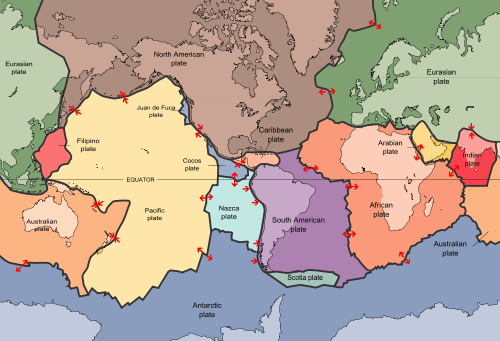Antarctic Plate

The Antarctic Plate is a tectonic plate containing the continent of Antarctica and extending outward under the surrounding oceans. After breakup from Gondwana, the southern part of the supercontinent Pangea, the Antarctic plate began moving the continent of Antarctica south to its present isolated location causing the continent to develop a much colder climate. [1] The Antarctic Plate is bounded almost entirely by extensional mid-ocean ridge systems. The adjoining plates are the Nazca Plate, the South American Plate, the African Plate, the Indo-Australian Plate, the Pacific Plate, and, across a transform boundary, the Scotia Plate.
The Antarctic plate is roughly 60,900,000 square kilometers.[2] It is the fifth biggest plate in the world.
The Antarctic plate movement is estimated at least 1 centimeter/per year towards the Atlantic Ocean.
References
- ↑ Fitzgerald, Paul (2002). "Tectonics and landscape evolution of the Antarctic plate since the breakup of Gondwana, with an emphasis on the West Antarctic Rift System and the Transantarctic Mountains" (PDF). Royal Society of New Zealand Bulletin (35): 453–469. Retrieved 1 February 2015.
- ↑ SFT and the Earth's Tectonic Plates
| |||||||||||||||||||||||||
